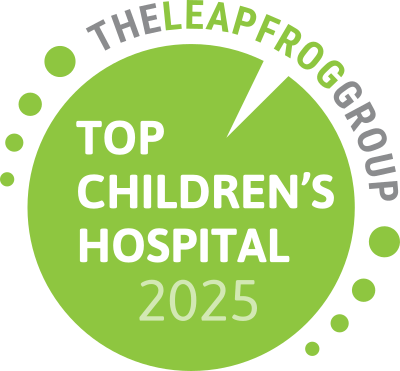
Addressing eating disorders in the adolescent population
Posted: May 14, 2021Eating disorders are among the most fatal psychiatric illnesses. What’s complicated about both diagnosing and treating eating disorders is that they come in many different forms, among all types of patients. Additionally, the signs indicating a potential eating disorder are not always visibly apparent.
“Historically, there's been some bias in eating disorder language, where not all patients have been treated equally. What we're recognizing now is that eating disorders occur across the spectrum in terms of people of all races and colors, genders and socioeconomic class,” states Dr. Michelle Bowden, General Pediatrician at Le Bonheur Children's Hospital.
**To listen to an in-depth conversation on this topic with Dr. Michelle Bowden, General Pediatrician at Le Bonheur Children's Hospital, follow this link: https://radiomd.com/lebonheur/item/44276
Types of Eating Disorders
Dr. Bowden, who specializes in Adolescent Medicine, describes the various types of eating disorders she sees at the Le Bonheur Eating Disorders Clinic. The two most common are anorexia nervosa and bulimia nervosa. Unlike the very thin images one might picture in reference to anorexia, Dr. Bowden says many of the patients who come into the clinic don’t present that severely.
“What we typically see is a patient who has progressively started restricting the number of calories they eat over time, very often accompanied by also increasing how much exercise they get. Sometimes, that means they become underweight. Other times it means they stop growing appropriately. And in other cases it means they were overweight and become normal weight, but the ways in which they're losing weight and the rapidity they lose weight is dangerous for their bodies.”
A newer diagnosis is called “avoidant restrictive food intake disorder” or ARFID, which represents a fair amount of the clinic’s patient population. With this disorder, a patient doesn't necessarily try to change the way their body looks, but they have a very restricted diet for other reasons. For example, they may have autism spectrum disorder or obsessive compulsive disorder (OCD). Some start as just “picky eaters” and progress into very restrictive behavior.
The clinic also addresses behaviors like binge eating and exercise bulimia.
Does Your Child Have an Eating Disorder? Red Flags to Watch For
Teens and even younger adolescents can be quite good at hiding what’s going on in their lives. So, parents need to be on alert.
One change parents can watch for is if adolescents start being highly conscious of what they're eating. They may pay more attention to food labels or become active in preparing their own meals—to the point where they don’t want to eat anything someone else has prepared. In many cases, adolescents will withdraw from family meals altogether. If an adolescent routinely visits the restroom directly after a meal, it may be indicative they are purging.
Physical signs are also important to keep note of, such as over-exercising (possibly to the point of injury), visibly losing weight, becoming easily fatigued or weak, or feeling chilled all of the time. “That's because they just don't have enough nutrition to fuel their bodies to get the warmth to the extremities,” explains Dr. Bowden.
Determining if an adolescent may have an eating disorder begins by asking the right questions. “That's really why our Eating Disorder Clinic exists. To help an entire spectrum of parents—from those who are very concerned to those who would just like more education on eating disorders. If a patient does wind up having a more severe illness, we have connections to eating disorders counselors, therapists, nutritionists, and dieticians who all have expertise in eating disorder care. Should a patient need a more intensive treatment regimen, we also can make those referrals and help get that patient into the care they need,” assures Dr. Bowden.
COVID-19’s Impact on Eating Disorder Prevalence
The COVID-19 pandemic has taken a significant toll on mental health—among people of all ages. Specifically, Dr. Bowden and her colleagues have seen an exponential growth in the need for eating disorder treatment. One statistic revealed that eating disorder treatment center referrals are seven times higher than they were before COVID-19 hit.
“One of my favorite things to tell parents is that eating disorders are never about food. It's easy to make them about food. But, eating disorders are really about control, and in March 2020 most of us lost all the control we felt like we had over our lives,” she notes. “That includes our teenagers. They experienced social isolation; maybe started spending more time on social media. So, they started being more aware of social pressures to look a certain way. And then they had time—time to think about what they were eating.”
Support for Parents
While the adolescents are the “patients” at the clinic, parents also need support to navigate the unknowns of eating disorders. To fulfill that need, the clinic established a parent support group called Comfort from Our Cupboard. The group is scheduled to meet virtually over Zoom, on the first and third Tuesdays of the month, in order to allow for COVID safety.
“We'll be able to offer comfort and support and hope for those who may just be entering this journey. They can learn from one another. They can support each other. They can gain education about tactics that worked. There are days you just need somebody to listen and say ‘Hey, I've been there and I know that it gets better.’ All of that will be a part of this group, too,” shares Dr. Bowden.
To obtain more information about the parent support group, please email cfoc@lebonheur.org.



